Choosing the right flooring can completely transform your home or commercial space. Wood flooring, with its timeless beauty, has long been the top choice for many. But laminate flooring, known for affordability and versatility, has surged in popularity. So, what’s truly better: wood or laminate flooring? This question matters beyond style — it impacts your budget, maintenance, durability, environmental footprint, and how the floor performs in your unique space.
Wood flooring offers natural beauty and long-term value but requires higher investment and maintenance. Laminate flooring provides durability and easier upkeep at a lower cost, making it an excellent choice for many environments. The best choice depends on your priorities and space needs.
Imagine walking into a room where the floor tells a story — is it the authentic grain of real wood, or the cleverly designed texture of laminate? Understanding the differences helps you make a choice that fits your lifestyle and budget. Let’s dive deeper into the key questions you must ask before deciding.
1. What are the main differences between wood and laminate flooring?
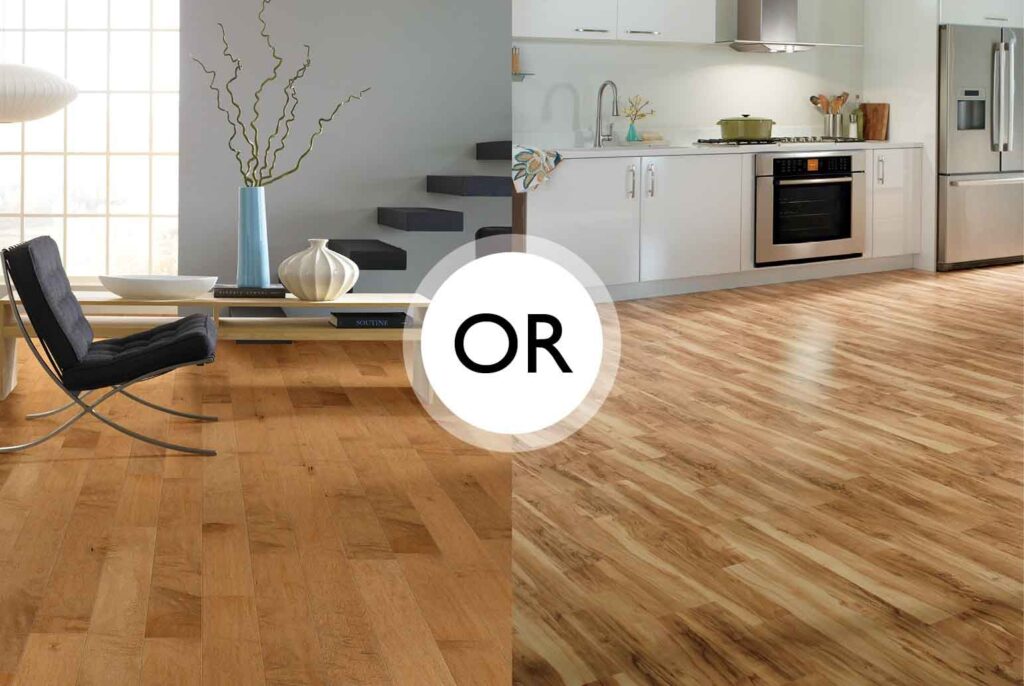
Wood flooring is made from natural hardwood planks, while laminate consists of a photographic wood-like layer over a fiberboard core, making them fundamentally different in material and feel.
- Natural vs Manufactured: Wood floors are solid or engineered from real trees, offering unique grains and textures. Laminate is a multi-layer synthetic product that mimics wood’s appearance using high-resolution images sealed under a clear wear layer.
- Core Materials: Wood floors use hardwood species like oak, maple, or walnut. Laminate uses high-density fiberboard (HDF) or medium-density fiberboard (MDF) as a core, topped with a printed surface.
- Feel and Sound: Wood has a warm, authentic feel and sound underfoot. Laminate can feel harder or hollow depending on installation and underlay.
- Installation: Wood often requires professional installation with nails or glue; laminate usually uses a click-lock system for DIY-friendly floating installation.
| Аспект | Деревянный пол | Ламинированный пол |
|---|---|---|
| Material Type | Natural hardwood planks (solid or engineered) | Multi-layer synthetic product with photographic wood-like layer |
| Основные материалы | Hardwood species like oak, maple, walnut | High-density fiberboard (HDF) or medium-density fiberboard (MDF) |
| Внешний вид | Unique grains and natural texture | Printed high-resolution wood images under clear wear layer |
| Feel and Sound | Warm, authentic feel and natural sound | Can feel harder or hollow depending on installation and underlay |
| Способ установки | Usually requires professional installation (nails or glue) | Click-lock system for DIY-friendly floating installation |
2. Which flooring option offers better durability and maintenance ease?
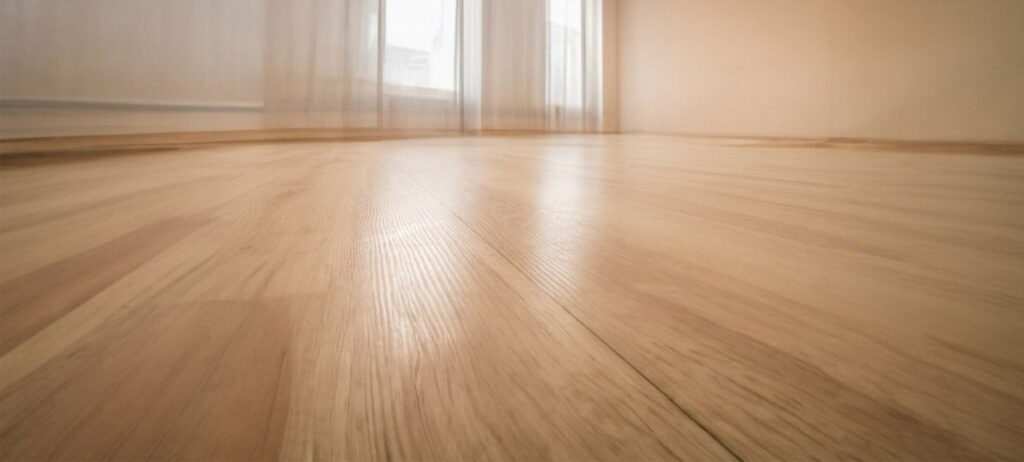
Laminate flooring is generally more scratch-resistant and easier to maintain, while wood requires careful upkeep but can be refinished multiple times.
Durability & Maintenance Comparison
- Scratch & Wear Resistance: Laminate’s tough wear layer resists scratches, stains, and dents better than wood, making it ideal for high-traffic or pet-friendly homes.
- Водонепроницаемость: Standard wood is vulnerable to moisture and can warp or stain. Laminate has better resistance but still isn’t fully waterproof (SPC flooring is a more water-resistant laminate alternative).
- Maintenance Routine: Wood needs regular polishing, refinishing every few years, and prompt cleaning of spills. Laminate flooring only requires sweeping and damp mopping.
- Repairability: Wood can be sanded and refinished 3-5 times, extending lifespan. Damaged laminate planks usually must be replaced entirely.
- Lifespan: Wood floors can last 30-100 years with care; laminate typically lasts 10-30 years.
| Аспект | Деревянный пол | Ламинированный пол |
|---|---|---|
| Scratch & Wear Resistance | Susceptible to scratches and dents; requires care | Tough wear layer resists scratches, stains, and dents |
| Водонепроницаемость | Vulnerable to moisture; can warp or stain | Better moisture resistance but not fully waterproof (SPC laminate offers improved water resistance) |
| Maintenance Routine | Needs regular polishing, refinishing, and quick spill cleanup | Requires simple sweeping and damp mopping |
| Ремонтопригодность | Can be sanded and refinished 3-5 times | Damaged planks usually must be fully replaced |
| Продолжительность жизни | 30-100 years with proper care | Typically lasts 10-30 years |
3. How do wood and laminate flooring compare in terms of environmental impact?
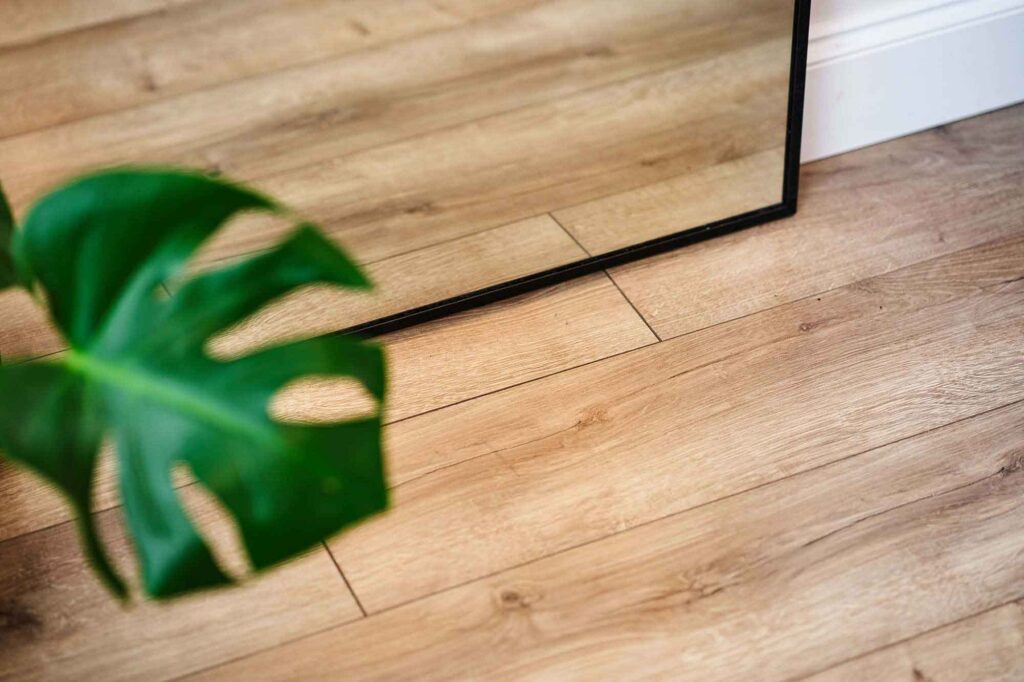
Wood flooring is renewable and biodegradable but involves deforestation concerns; laminate uses recycled materials but includes synthetic resins and plastics.
Экологические соображения
- Устойчивость: Wood sourced from certified sustainably managed forests (FSC certified) is renewable and eco-friendly. Unsustainable harvesting contributes to deforestation.
- Manufacturing Impact: Laminate manufacturing involves adhesives and resins (like melamine and formaldehyde), which have environmental and indoor air quality concerns if poorly managed.
- Возможность вторичной переработки: Wood can be recycled or repurposed more easily; laminate is harder to recycle due to composite materials.
- Life Cycle Analysis: Wood’s long lifespan offsets environmental impact, whereas shorter-lived laminate may need earlier replacement.
- Инновации: Eco-friendly laminates now use lower VOC emissions and recycled materials, improving their green profile.
| Аспект | Деревянный пол | Ламинированный пол |
|---|---|---|
| Устойчивое развитие | Renewable and biodegradable if sourced sustainably (FSC certified); risk of deforestation if not | Uses recycled materials but relies on synthetic resins and plastics |
| Manufacturing Impact | Natural processing with minimal chemicals | Involves adhesives and resins (melamine, formaldehyde) that may affect environment and indoor air quality if unmanaged |
| Возможность вторичной переработки | Easier to recycle or repurpose | Difficult to recycle due to composite materials |
| Life Cycle Analysis | Long lifespan offsets environmental impact | Shorter lifespan may lead to earlier replacement |
| Innovations | Continual improvements in sustainable forestry | New eco-friendly laminates with lower VOCs and recycled content |
4. Do wood or laminate floors perform better in different indoor environments?
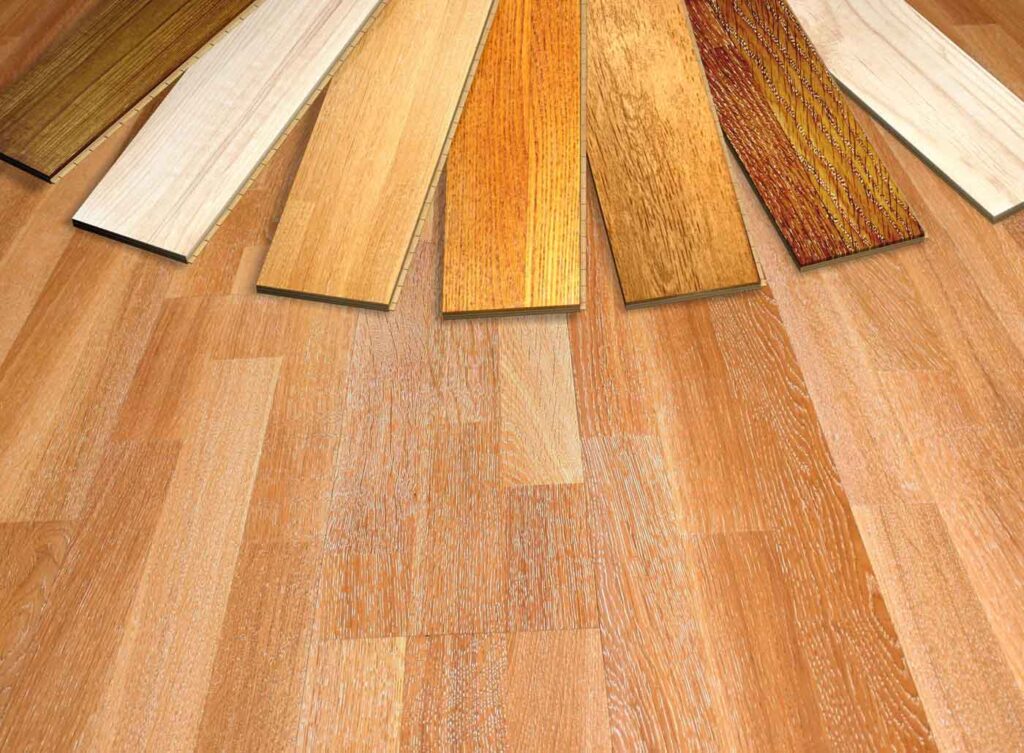
Wood excels in dry, stable environments like living rooms, while laminate suits moisture-prone or high-traffic areas better, with some types designed for bathrooms or kitchens.
Environmental Suitability
- Humidity & Moisture: Wood can warp or swell in humid or wet areas. Laminate with water-resistant cores (like SPC flooring) performs better in kitchens, basements, or bathrooms.
- Temperature Fluctuations: Wood expands and contracts with temperature changes, requiring acclimation before installation. Laminate is more dimensionally stable.
- Commercial vs Residential Use: Laminate is popular in commercial spaces due to its durability and low maintenance; wood is preferred for upscale residential spaces for its luxury feel.
- Allergy Considerations: Both floors are hypoallergenic options compared to carpets, but laminate’s smooth surface may trap less dust and allergens.
- Underfloor Heating: Wood can be used with underfloor heating but requires careful moisture management; laminate is generally compatible and conducts heat well.
| Аспект | Деревянный пол | Ламинированный пол |
|---|---|---|
| Humidity & Moisture | Can warp or swell in humid/wet areas | Water-resistant cores (e.g., SPC) perform well in kitchens, basements, bathrooms |
| Стабильность температуры | Expands/contracts with temperature changes; needs acclimation | More dimensionally stable under temperature fluctuations |
| Usage Environment | Preferred in upscale residential spaces for luxury feel | Popular in commercial/high-traffic areas due to durability and low maintenance |
| Allergy Considerations | Hypoallergenic but may trap more dust | Hypoallergenic with smoother surface that traps less dust/allergens |
| Напольное отопление | Compatible but requires careful moisture control | Generally compatible and conducts heat efficiently |
5. Is the cost difference between wood and laminate flooring significant?
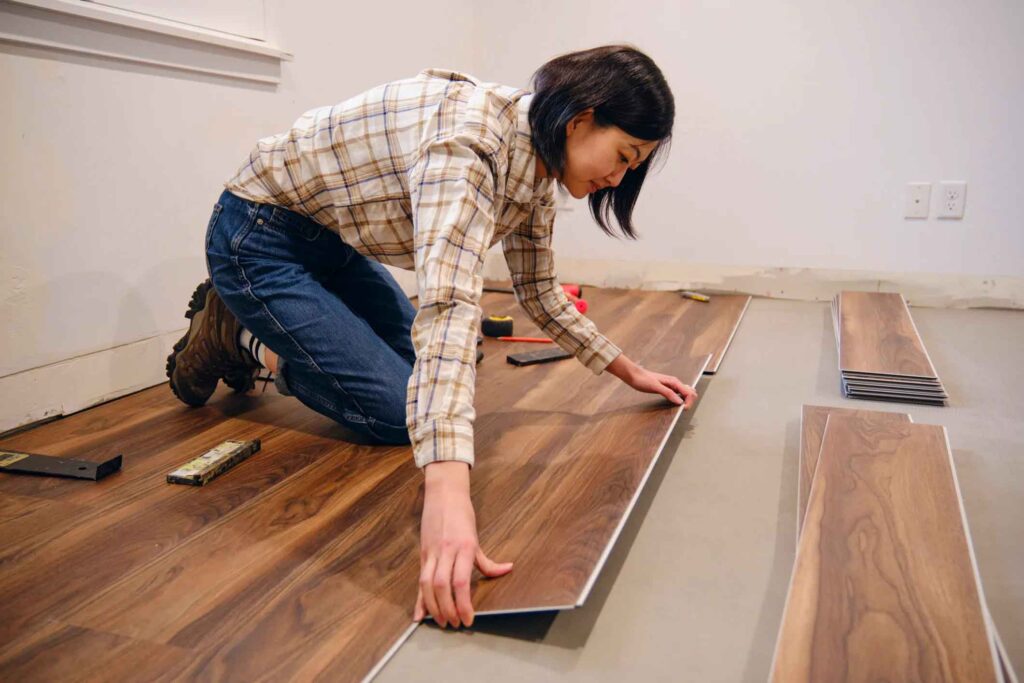
Laminate flooring is usually 30-70% cheaper upfront and in installation costs, offering a budget-friendly option without sacrificing style.
Cost Breakdown and Value
| Аспект стоимости | Wood Flooring (Per Sq Ft) | Laminate Flooring (Per Sq Ft) | Примечания |
|---|---|---|---|
| Стоимость материала | $5 – $15+ | $1.50 – $5 | Wood varies by species and grade |
| Стоимость установки | $4 – $8 | $1.50 – $3 | Wood often needs pro installers |
| Стоимость обслуживания | Moderate to High | Низкий | Wood refinishing adds to lifetime cost |
| Продолжительность жизни | 30-100 years | 10-30 years | Longer life can offset higher costs |
| Total Cost Over 20 Years | Выше | Нижний | Depends on maintenance and replacement |
- Budget vs Longevity: Wood’s upfront cost is higher but can add resale value; laminate is economical with less commitment.
- DIY Potential: Laminate’s easier installation can save on labor.
- Hidden Costs: Wood may incur refinishing and repair expenses; laminate’s damage often means full plank replacement.
6. Are there design and aesthetic differences that influence the choice?
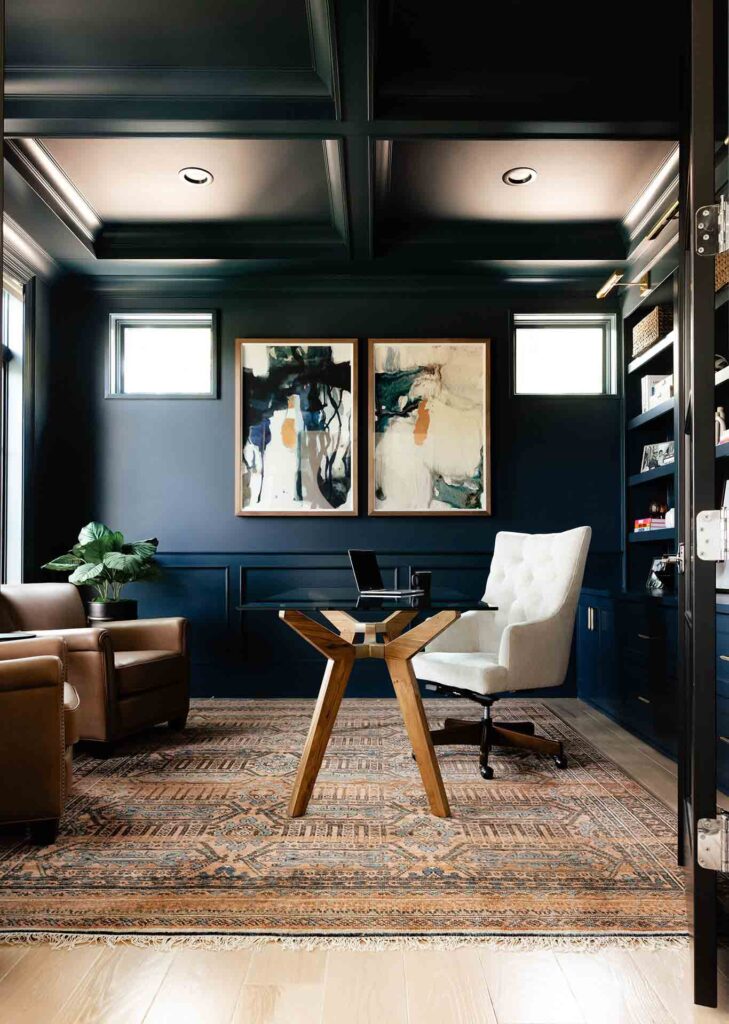
Wood flooring offers authentic grain and texture with natural variations; laminate provides versatile, realistic designs with more pattern options.
Visual Appeal & Customization
- Authenticity: Wood’s natural grain and color shifts give each plank a unique character that laminate tries to replicate but can’t fully match.
- Design Variety: Laminate can imitate exotic woods, stone, or tile patterns, offering broader aesthetic choices.
- Texture & Finish: Wood feels warmer and softer underfoot; laminate textures can range from smooth to embossed for realism.
- Color Stability: Laminate colors stay consistent, while wood can change over time due to sunlight exposure.
- Trends & Resale: Wood floors are traditionally seen as premium and desirable for home buyers, potentially increasing property value.
| Аспект | Деревянный пол | Ламинированный пол |
|---|---|---|
| Подлинность | Natural grain and color variations create unique character | Mimics wood grain but cannot fully replicate authenticity |
| Разнообразие дизайна | Limited to natural wood species | Wide range of designs, including exotic wood, stone, and tile patterns |
| Texture & Finish | Warmer, softer feel underfoot | Textures vary from smooth to embossed for realistic look |
| Color Stability | Colors may change over time due to sunlight exposure | Colors remain consistent without fading |
| Trends & Resale Value | Considered premium; can increase property value | Offers style flexibility but less impact on resale |
Ready to Choose Your Flooring?
Deciding between wood and laminate flooring depends on your budget, lifestyle, environmental values, and design preferences. Whether you want the natural luxury of wood or the practical versatility of laminate, Kinwin can help you customize your flooring solution to fit your unique needs.
Contact Kinwin today for a personalized quote and expert advice on SPC and laminate flooring products that combine durability, eco-friendliness, and style perfectly tailored to your project!


